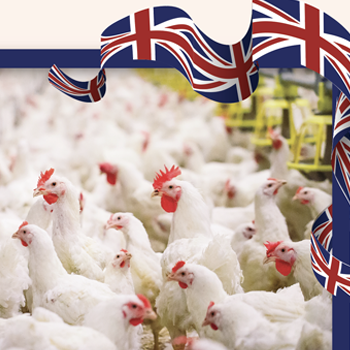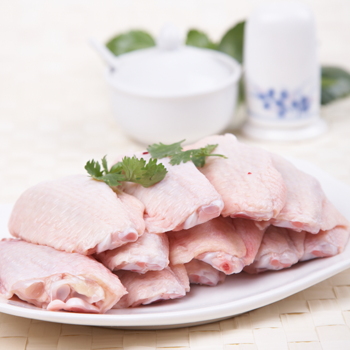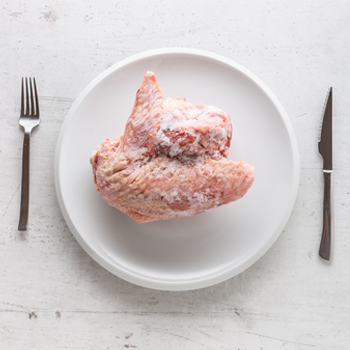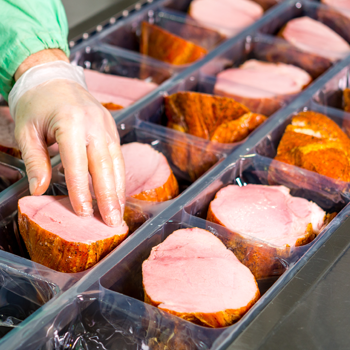เทรนด์อุตสาหกรรมสัตว์ปีกปี 2561 ในสหราชอาณาจักร
By: Melanie Jenkins
pigandpoultry.org.uk
Translated and Compiled By: กองบรรณาธิการ นิตยสาร ฟู้ด โฟกัส ไทยแลนด์
Editorial Team Food Focus Thailand Magazine
editor@foodfocusthailand.com
อุตสาหกรรมสัตว์ปีกในสหราชอาณาจักรมีการปรับตัวและเติบโตอยู่เสมอ ทั้งยังมีการพัฒนาอย่างต่อเนื่อง เราจึงควรติดตามอัพเดททิศทางของอุตสาหกรรมนี้
เมื่อไม่นานมานี้ กลุ่มธุรกิจสัตว์ปีกได้เติบโตขึ้นอย่างพุ่งทะยาน ข้อมูลจาก Defra statistics ระบุว่าในปี 2558-2559 มีจำนวนโรงเชือดเพิ่มขึ้นร้อยละ 4.63 ซึ่งสามารถเชือดชำแหละสัตว์ปีกได้เป็น 1.08 พันล้านตัว ด้านการบริโภคไข่ก็มีแนวโน้มเพิ่มขึ้น ข้อมูลถึงเดือนสิงหาคม 2560 พบว่ามีการบริโภคไข่เพิ่มขึ้นร้อยละ 2 โดยเพิ่มเป็น 12.8 พันล้านฟอง ทั้งนี้ โดยรวมแล้วสหราชอาณาจักรมีกำลังการผลิตไข่ได้ 10.6 พันล้านฟอง ยอดขายปลีกจนถึงเดือนกันยายน 2560 เพิ่มขึ้นร้อยละ 7 เป็น 972 ล้านปอนด์
หลังจากสถานการณ์ไข้หวัดนกระบาด มาตรการด้านระบบความปลอดภัยทางชีวภาพก็มีเพิ่มมากขึ้น โดยเฉพาะกับการเลี้ยงไก่แบบปล่อย ในขณะเดียวกัน ผู้ประกอบการจากทั้งอุตสาหกรรมไก่ไข่และไก่เนื้อก็นำมาตรการต่างๆ มาใช้เพิ่มมากขึ้นเพื่อที่จะลดการใช้ยาปฏิชีวนะ แล้วผู้ที่เกี่ยวข้องในอุตสาหกรรมสัตว์ปีกลงทุนในเรื่องอะไรกันบ้าง?
ในปีนี้มีการก่อสร้างอาคารและสิ่งปลูกสร้างใหม่ๆ เพื่อใช้เลี้ยงสัตว์ปีกมากกว่าปีที่แล้ว โดยมีการขอข้อมูลเข้ามาทั้งจากผู้ผลิตไก่เนื้อและไก่ไข่ แต่การเลี้ยงไก่แบบปล่อยนั้นมีความต้องการที่เฉพาะเจาะจง
มาตรการทางการเงินเพื่อสนับสนุนการใช้พลังงานทดแทนลดความร้อน (Renewal Heat Incentive; RHI) นั้นถูกคาดหวังที่จะมาช่วยชะลอการลงทุนของหม้อต้มไอน้ำชีวมวล (Biomass boilers) และพลังงานหมุนเวียนรูปแบบอื่นๆ แต่มันไม่ได้เป็นเช่นนั้นเสียทีเดียว
หนึ่งในเทคโนโลยีสำคัญของวงการเลี้ยงไก่ในชั่วโมงนี้ คือ ระบบการบริหารจัดการทางไกล เทคโนโลยีนี้มีประโยชน์อย่างมากในการดูแลฟาร์ม แม้ว่าผู้ดูแลจะไม่ได้อยู่ที่ฟาร์มก็ตาม ข้อมูลต่างๆ จะถูกส่งมายังสำนักงานกลาง ผู้จัดการสามารถจะวิเคราะห์ได้ว่าบริเวณใดของฟาร์มที่ยังไม่มีประสิทธิภาพเต็มที่ ก็จะดำเนินการกับพื้นที่บริเวณนั้นๆ เทคโนโลยีนี้ต้องมีการลงทุนในระดับหนึ่ง แต่ด้วยการใช้ประโยชน์จากอินเทอร์เน็ต ทำให้แม้แต่เกษตรกรที่ไม่ได้พึ่งพิงใคร (เกษตรกรที่อาจไม่ได้อยู่ในระบบคอนแทรคฟาร์มมิ่ง) ก็สามารถดำเนินการได้
The UK poultry industry is constantly growing and adapting, and with continued development in the sector it’s important to keep up-to-date with where the industry is headed.
Growth in the poultry sector has soared in recent years, with UK poultry meat slaughterings increasing by 4.63% between 2015 and 2016, to 1.08 bn head. Consumption of eggs has also continued to rise, up 2% in the year to August 2017 to 12.8 bn eggs, according to Defra statistics. In total, the UK produced 10.6 bn eggs, with the retail value rising by 7% in the year to September 2017, to £972m.
After the avian influenza outbreak, biosecurity measures are on the increase – especially on free range units, while producers from across the egg and broiler industries are implementing more measures to reduce antibiotic usage. So what are people investing in right now?
Construction of new poultry buildings seems buoyant compared to last year, with enquiries coming in from both broiler and egg producers – but free-range units are in particular demand.
Recent changes to the Renewal Heat Incentive (RHI) were anticipated to slow investment in biomass boilers and other forms of renewable energy, but this to not be the case.
Among the major technologies taking off right now are remote management systems. It is useful to keep an eye on the farm remotely. Information comes into a central office and managers can direct efforts to areas that are not performing. It is quite an investment but with the internet, even an independent farmer can do it.









